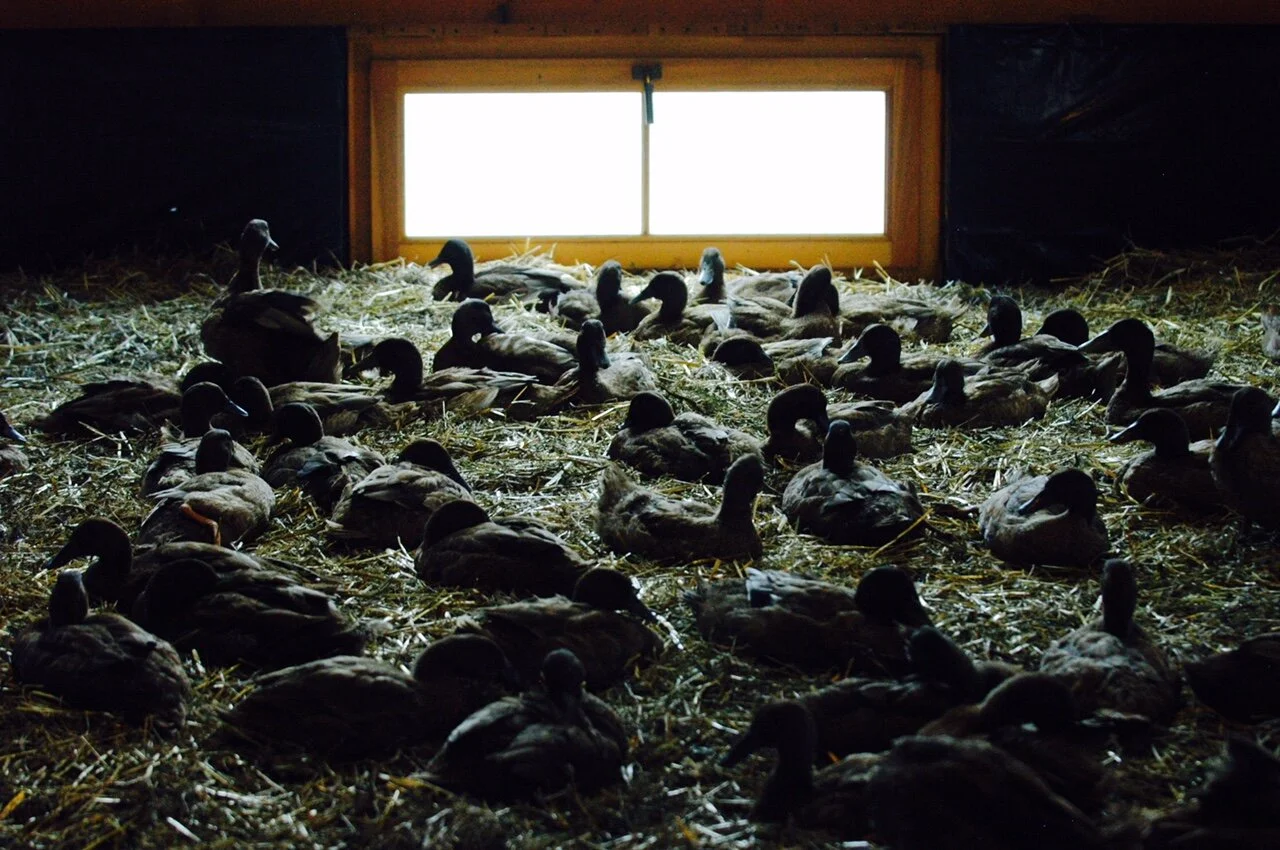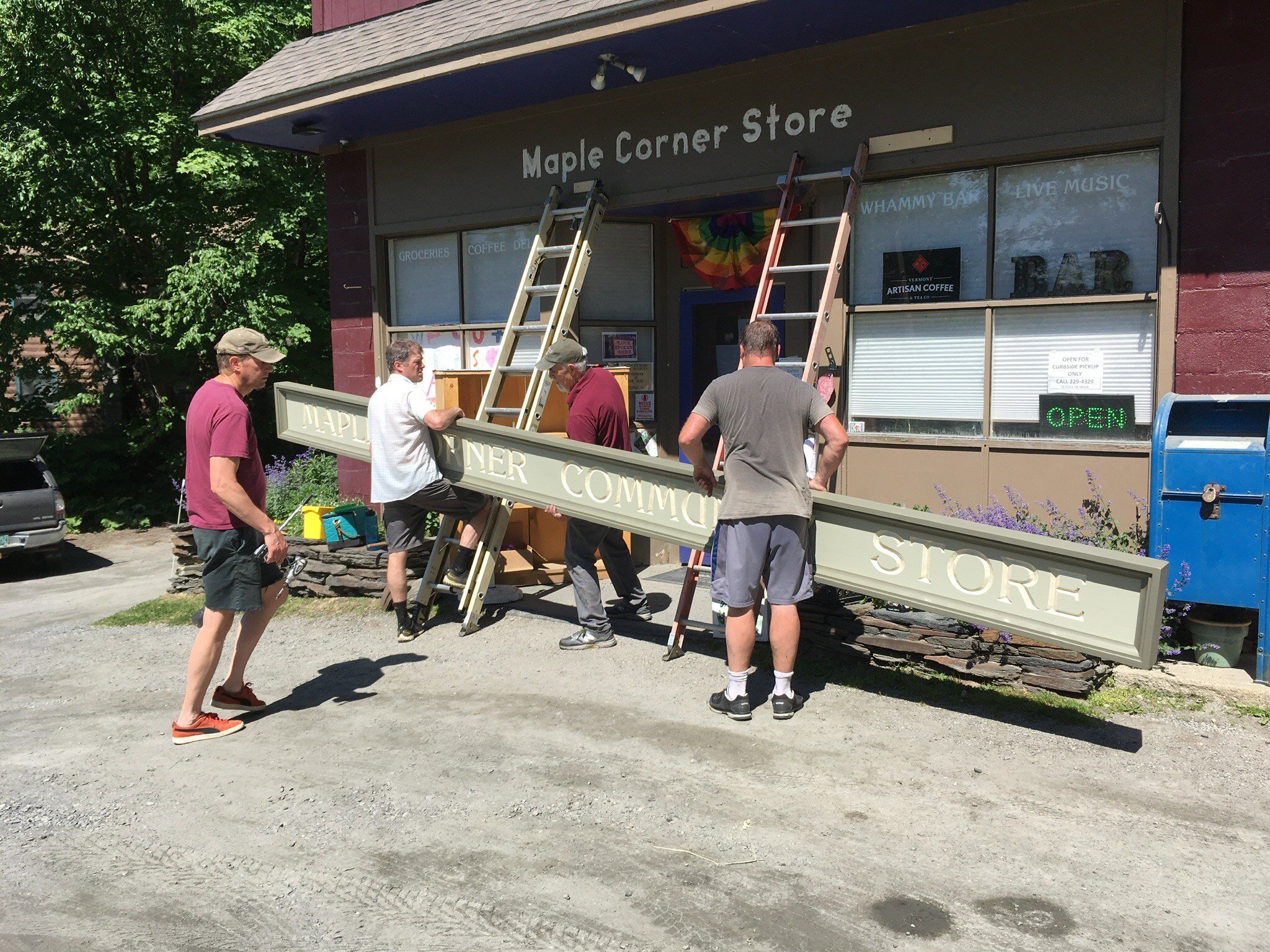How a flock of ducks found sanctuary amid Huntington peaks
The flock of ducks bedding down inside a converted barn that is insulated offer protection against predators and the elements. Courtesy photo.
An unmarked driveway leads from Huntington’s Camel’s Hump Road to a sprawling, 1,300-acre property where forest and farmland mingle. It’s home to the LivingFuture Foundation and SHO Farm, whose projects include a culinary incubator and research farm — and it’s become an unexpected sanctuary for a flock of ducks saved from slaughter.
Those ducks are under the care of SHO Farm owners Melissa Hoffman and wife Shawn Smith, proponents of vegan permaculture farming. The idea for a duck sanctuary took root when the pair visited a Vermont rice farm in 2016 to learn about duck-integrated rice growing. It’s a method that sends hundreds of ducklings into the rice patties to stimulate plant growth and naturally fertilize the soil.
“It really hit us that though we were buying rice, and not chicken or turkey or fish, we were really supporting a form of animal agriculture because he was using these little baby ducks in the growing of the rice, and then they were being slaughtered,” Smith said. The pair decided to adopt any ducklings that remained at the end of the season, eventually bringing 116 ducklings home.
To house the ducks, they converted an old barn into a cozy shelter. “The ducks live in a barn that wasn't built for animals,” Smith said. “It's a super-insulated barn that was built to house a renewable energy system and have a commercial kitchen to host events. It's not like a kind of traditional animal barn that is drafty.” Protecting the flock from predators including bear, mink, fox, and coyote is a top priority, and the farmers installed electric fences around the flock’s roaming area.
The duck sanctuary is just one of an eclectic suite of projects the LivingFuture Foundation has taken on, however. The majority of the 1,300-acre property remains forested to provide wildlife habitat. SHO also sells a line of products made with foraged plants in the surrounding landscape.
“[Hoffman] has a food lab where she'll experiment with things and we have a whole product line now,” Smith said. “A blend of wild foraged plants and fungi and then cultivated things … all ethically grown or ethically harvested and then combined for the greatest medicinal synergy for humans.”
In an effort to raise funds for the LivingFuture Foundation, Smith and Hoffman have considered selling various portions of the property. Previous listings included an 18-acre part of the lower field, off Camel’s Hump Road, and the farmstead itself, a handful of buildings on a 45-acre plot.
These days, Smith said, she’s in talks with potential buyers for smaller pieces of land, discussing construction of energy-efficient, affordable housing. “Our goal is to keep as much of the property as we can while creating a small community of value-aligned homeowners,” she explained. The flock, Smith said, isn’t going anywhere.








